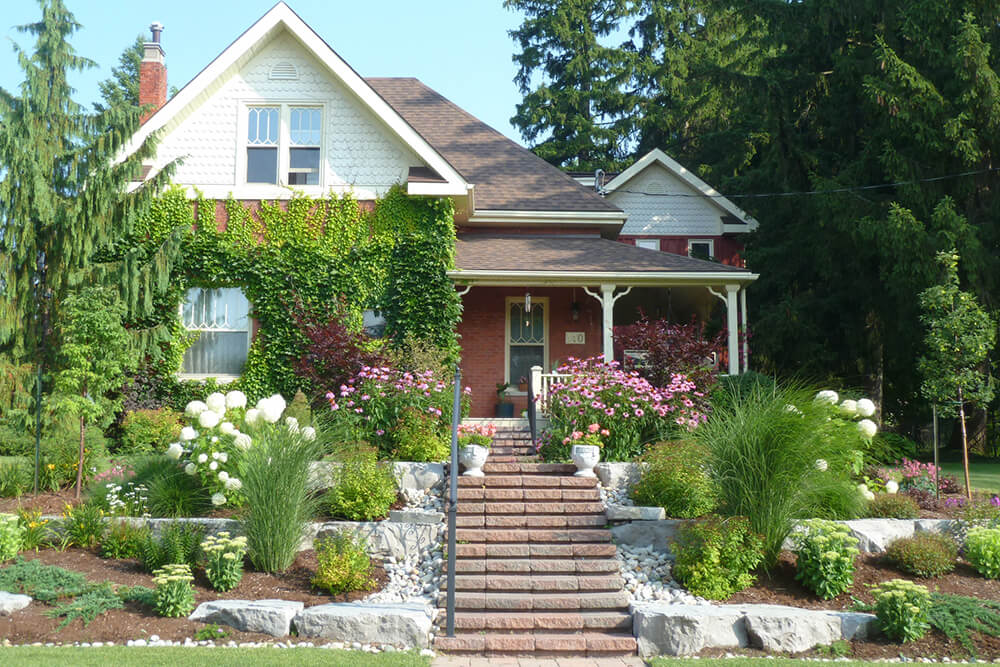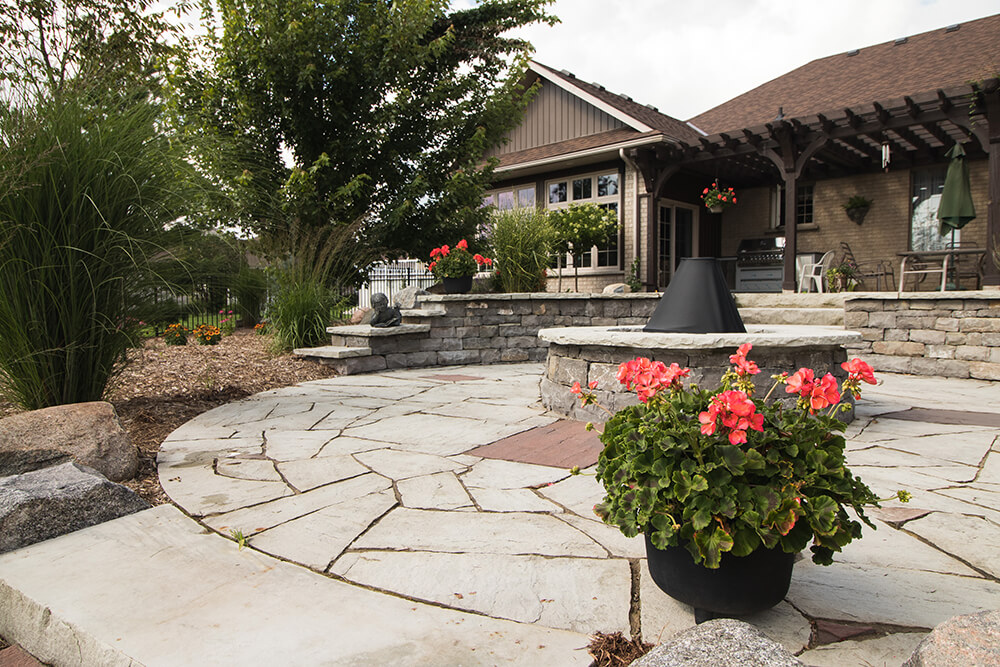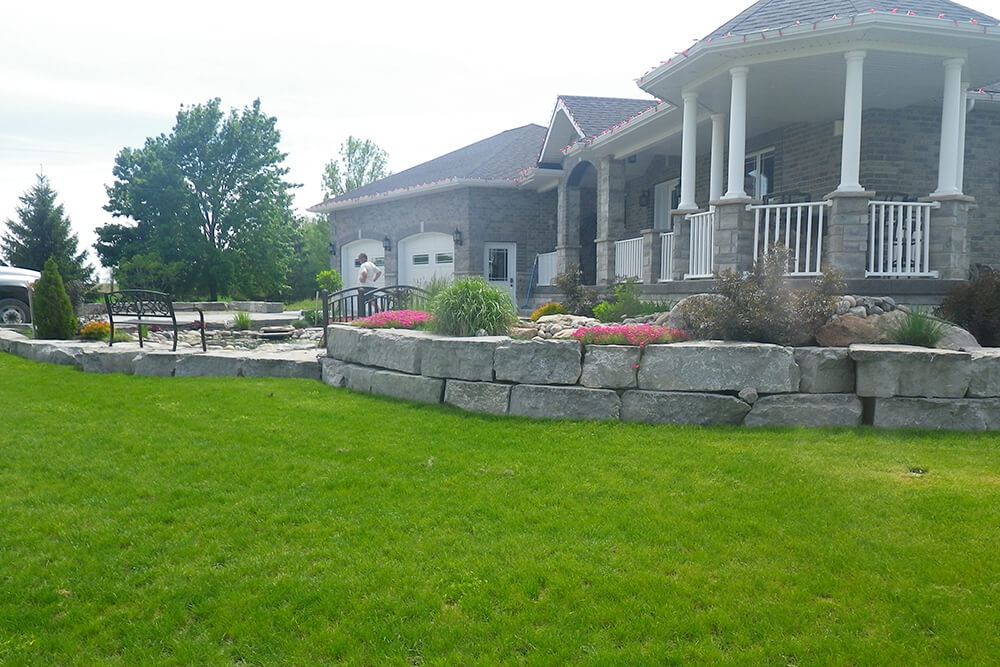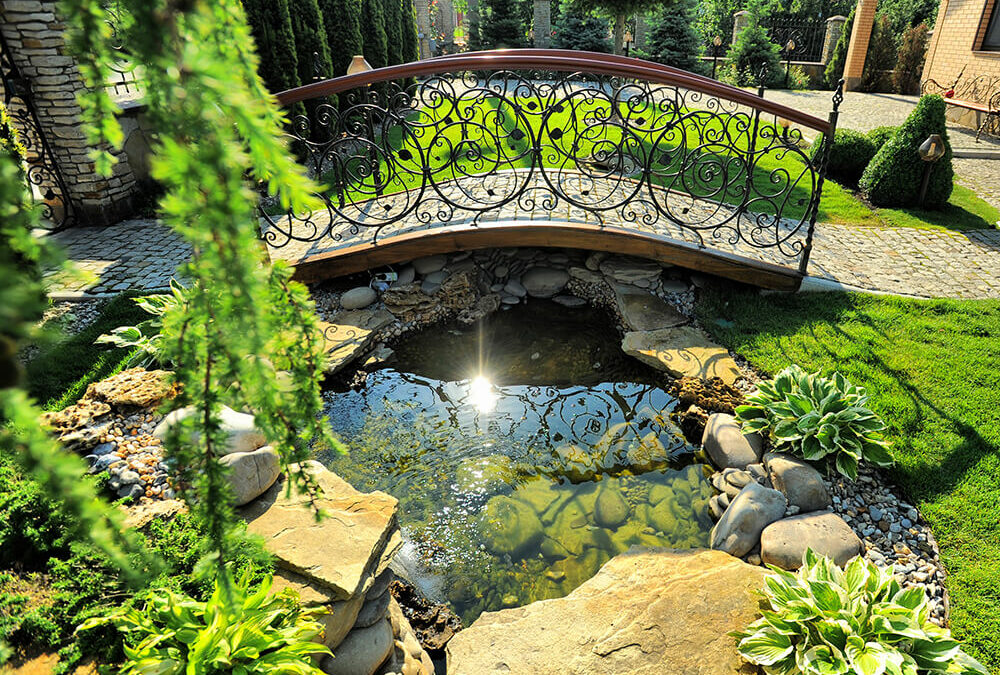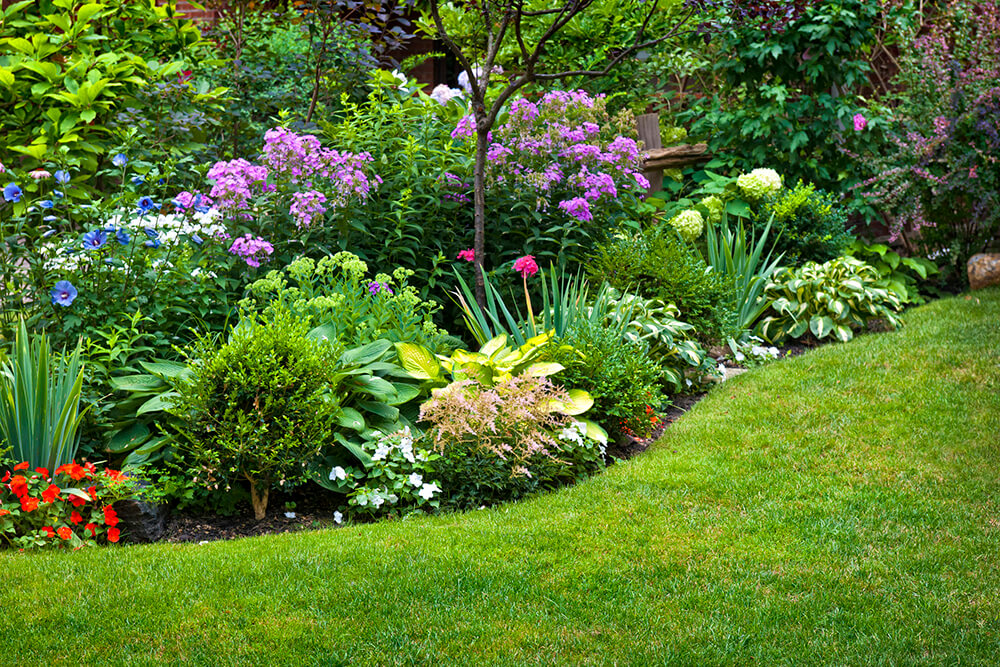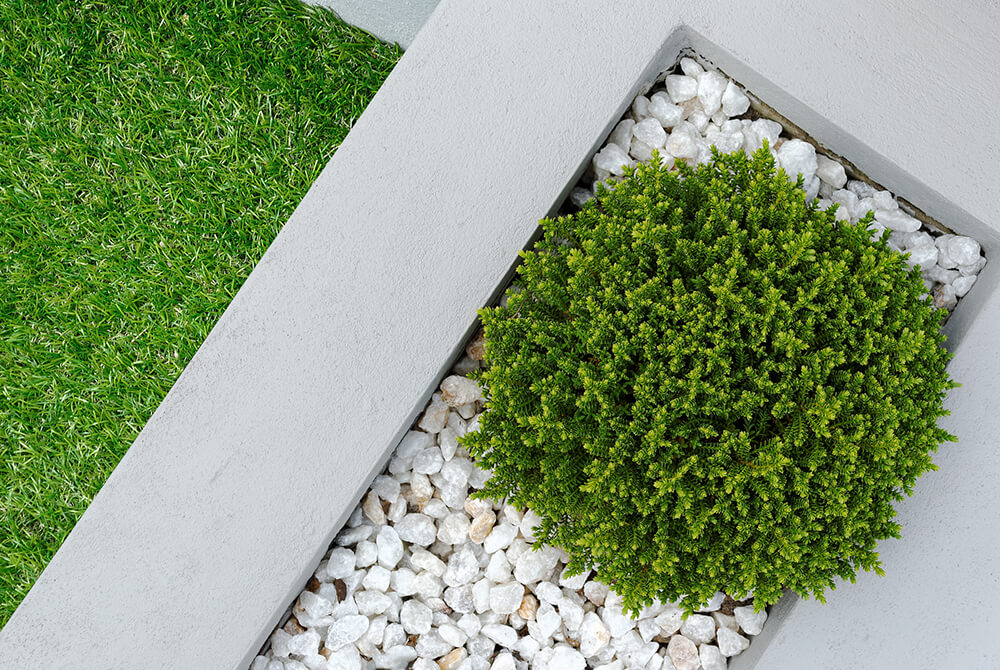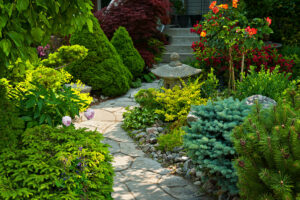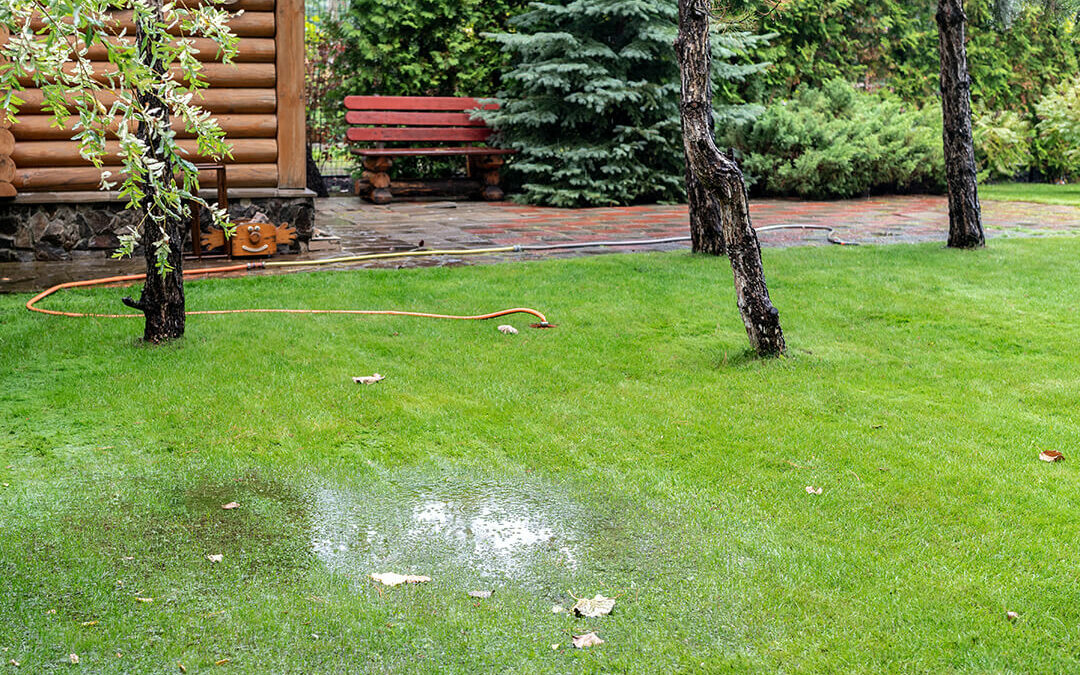
Improve drainage in your lawn and garden
At one time or another, many homeowners will encounter issues with poor draining soil. This can lead to flooding of patios, gardens, and low-lying or high-traffic grassy areas.
Stratford and area, in particular, has predominantly clay-based soils, making drainage problematic from the outset.
But not to fear, there are various solutions – some simple, some more complex – to your drainage woes.

Improve Drainage
Gardens
Mix in compost or sand. These materials have larger particles than clay, so incorporating them into the soil will create space for drainage. Just ensure that you mix the added materials in well – ideally by rototilling – to prevent layers from forming.
Lawns
If water pools in one or more areas of your lawn, the best strategy is to add drain tile. It’s a bit laborious (and potentially something you’ll want to outsource), but will be effective in eliminating standing water from your yard.
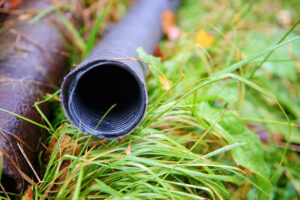
Use a 4” perforated drain tile, either (with or without a sock) and lay it in an 8 to 10-inch deep and 12-inch wide trench in the ground. Backfill around tile with a sandy loam soil that will help facilitate drainage of excess water into the tile.
If possible, extend the tile to an area where the water can run off your property. If that’s not possible, create a 3’ x3’ x3’ pit filled with ¾ clear stone where the tile can drain into and the water can disperse into the lower soil levels.
The top 4 to 6 inches of the trench should be filled with good quality top soil to ensure some water is retained to nourish grass, preventing the lawn from drying out during dry periods.
Patios
Patio areas, especially older ones or those that were poorly constructed, may fall prey to standing water. This can make the patio unusable until the surface either drains by itself or is cleared with a broom or squeegee.
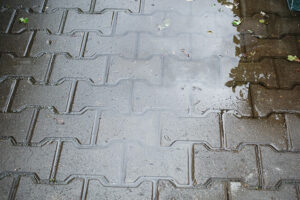
Standing water on stone surfaces can also lead to mossy growth, which is both slippery and unsightly. Prolonged pooling water can also negatively affect your home’s foundation and may even seep inside your basement.
The best solution to an ill-draining patio is to remove all stones and increase the level of the patio’s foundation by adding several inches of well-draining aggregate. In addition, it’s important to ensure that the patio has a slight slope away from the house, so that the water can drain freely and without risk of harming adjacent structures.
High-Traffic Areas
Some grassy areas serve as throughways (from the front to the back yard, for example). Many homeowners, especially owners of newer homes find that their side property lines shared with neighbours become tough to navigate due to standing water in wet conditions.

With houses being built closer together these days, new home owners may also find that plants and grass grow unpredictably or inconsistently due to lack of sufficient sunlight. When you add that to the fact that side yards are generally not used or seen by many, it’s not surprising that many look to a low-maintenance option to address all of these issues at once.
The most common solution is the installation of perforated drain tile, keeping with the original slope/grade of the property (typically back-to-front). Once the drain tile is installed and the trench backfilled, the area is finished with a combination of river rock and slabs to achieve a result that is navigable, well-draining, nice-looking, and low-maintenance.
Work with Wet Conditions
Of course, instead of fighting standing water, and assuming the issue isn’t too pervasive, there is a way you can work with the situation.
Choose moisture-loving plants and trees
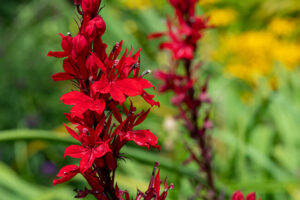 Just as some plants and trees flourish with more or less light than others, they all have varying tolerances of moisture. Choosing varieties that can tolerate slower-draining conditions will relieve you of what could otherwise be a ongoing battle. Ideally, you’ll still want to add some well-draining material to the soil to avoid plants having perpetually wet “feet”.
Just as some plants and trees flourish with more or less light than others, they all have varying tolerances of moisture. Choosing varieties that can tolerate slower-draining conditions will relieve you of what could otherwise be a ongoing battle. Ideally, you’ll still want to add some well-draining material to the soil to avoid plants having perpetually wet “feet”.
Some of these solutions are easier to implement on your own than others. If or when you reach the end of your capabilities and want the job done quickly and properly, give us a call. We regularly included drainage improvement measures in our landscaping projects and would be happy to help.

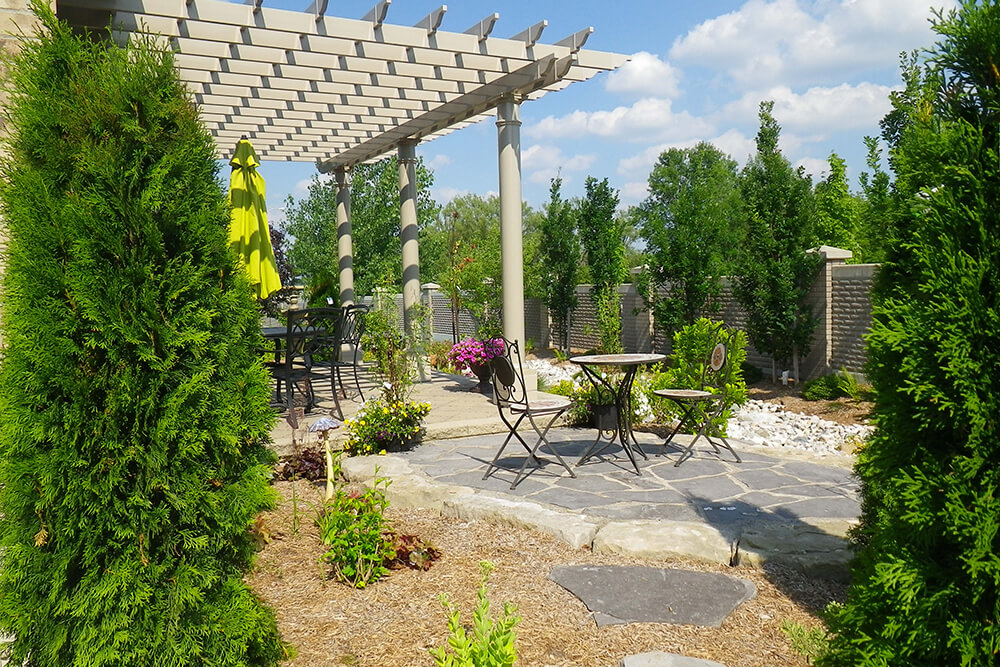
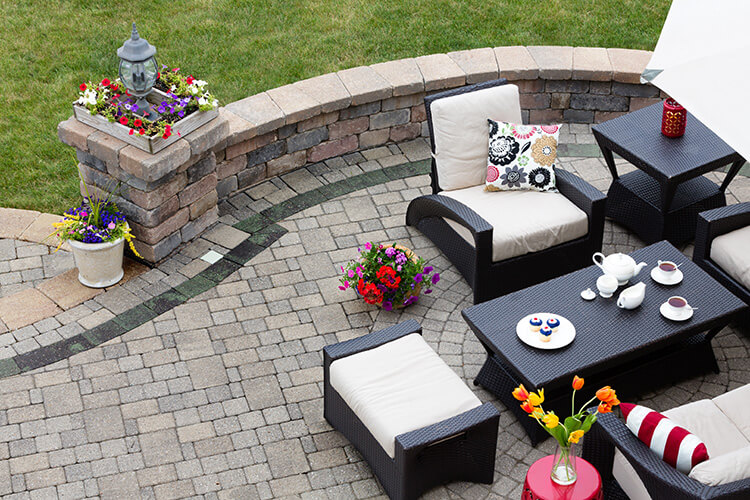 Flagstone is often one of the first products people think of when they start planning a patio. It’s beautiful and natural, coming in a wide range of shapes, sizes, and colours. While it can be cut into geometric shapes, many like the rustic appearance of a patio created using various sizes that are pieced together to create a walkway and/or patio.
Flagstone is often one of the first products people think of when they start planning a patio. It’s beautiful and natural, coming in a wide range of shapes, sizes, and colours. While it can be cut into geometric shapes, many like the rustic appearance of a patio created using various sizes that are pieced together to create a walkway and/or patio.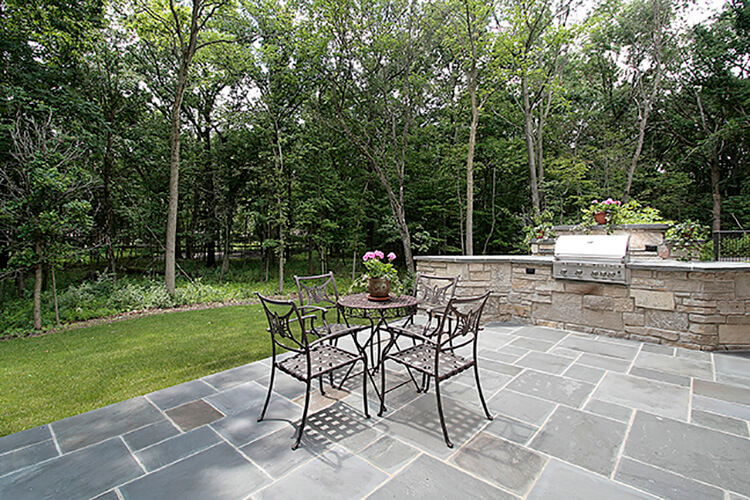 Above, we mentioned the rustic style, which is a subset of traditional and informal styles. The main styles to consider include traditional, modern, formal, and informal.
Above, we mentioned the rustic style, which is a subset of traditional and informal styles. The main styles to consider include traditional, modern, formal, and informal. There have never been more colour options for engineered stone products than there are today. And even natural stone is available in a wide array of colours and shades.
There have never been more colour options for engineered stone products than there are today. And even natural stone is available in a wide array of colours and shades.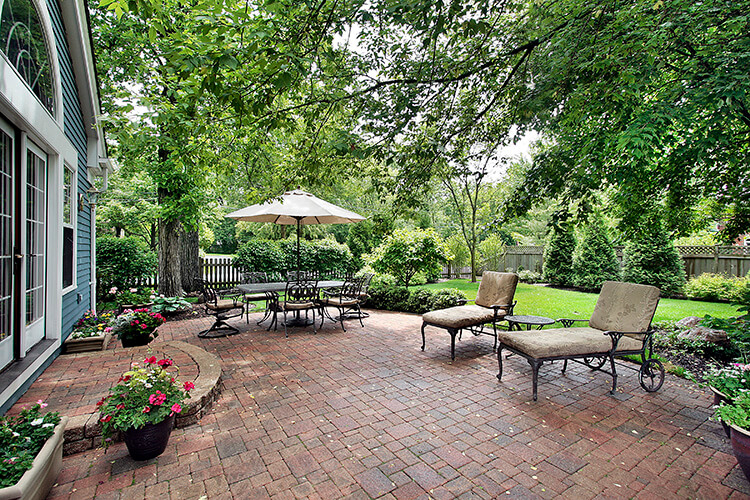 The budget factor needn’t take the fun out of your material selection process. There are lots of great options at every price point. If your budget is limited, consider selecting a cost-effective product as your primary material and then splurging on something a bit more expensive for a border, inlay, stairs, or other accent.
The budget factor needn’t take the fun out of your material selection process. There are lots of great options at every price point. If your budget is limited, consider selecting a cost-effective product as your primary material and then splurging on something a bit more expensive for a border, inlay, stairs, or other accent.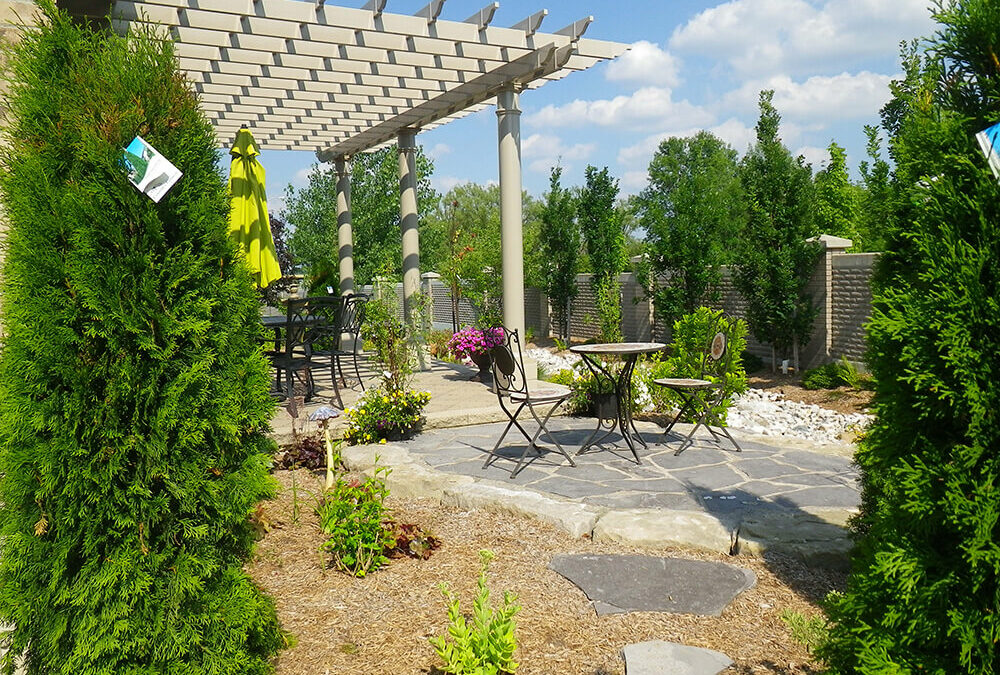
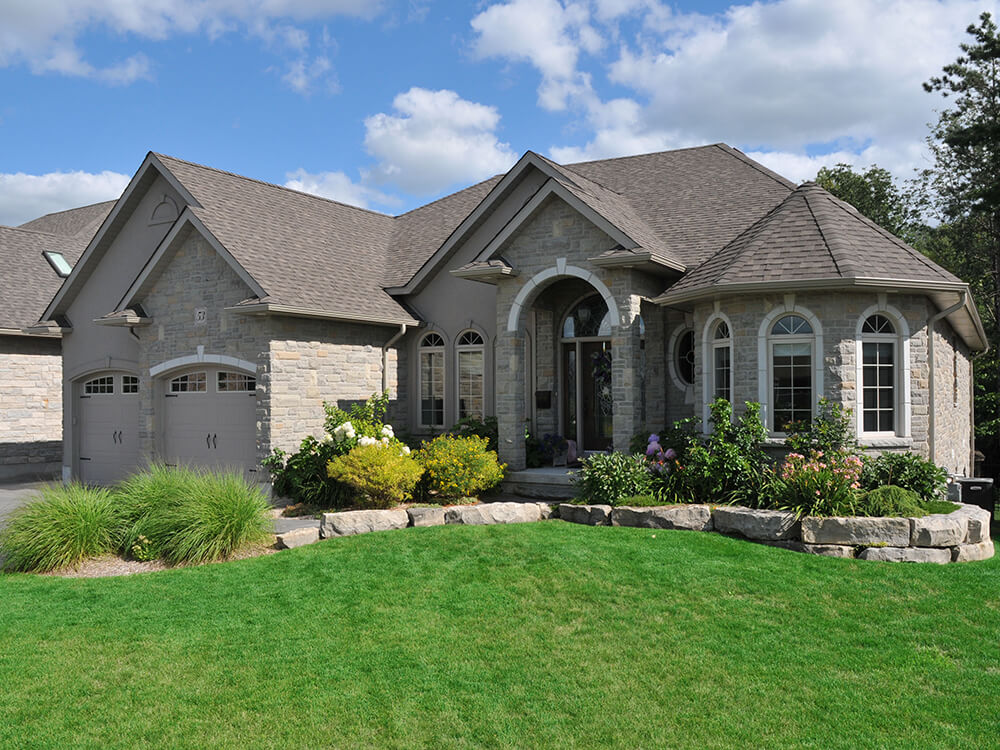 If you search online for ways to increase a home’s value, one method that almost invariably tops the list is to increase your home’s curb appeal. After all, the front of your home provides the first impression for potential buyers, whether they’re passing by or viewing your home online.
If you search online for ways to increase a home’s value, one method that almost invariably tops the list is to increase your home’s curb appeal. After all, the front of your home provides the first impression for potential buyers, whether they’re passing by or viewing your home online.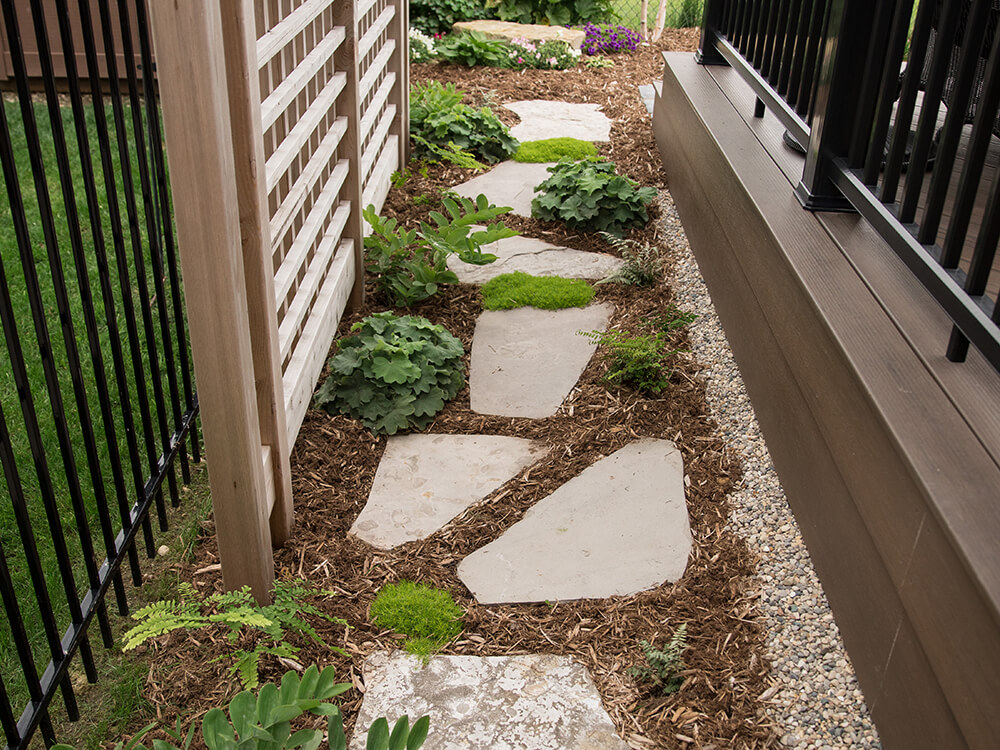 If you’re looking to upgrade your home’s exterior – front, sides, or back – consider updates that will enhance livability, functionality, and practicality. Not only will this maximize your enjoyment, but when it comes time to sell, potential buyers will be able to see themselves relaxing in, rather than working on, the yard and gardens.
If you’re looking to upgrade your home’s exterior – front, sides, or back – consider updates that will enhance livability, functionality, and practicality. Not only will this maximize your enjoyment, but when it comes time to sell, potential buyers will be able to see themselves relaxing in, rather than working on, the yard and gardens.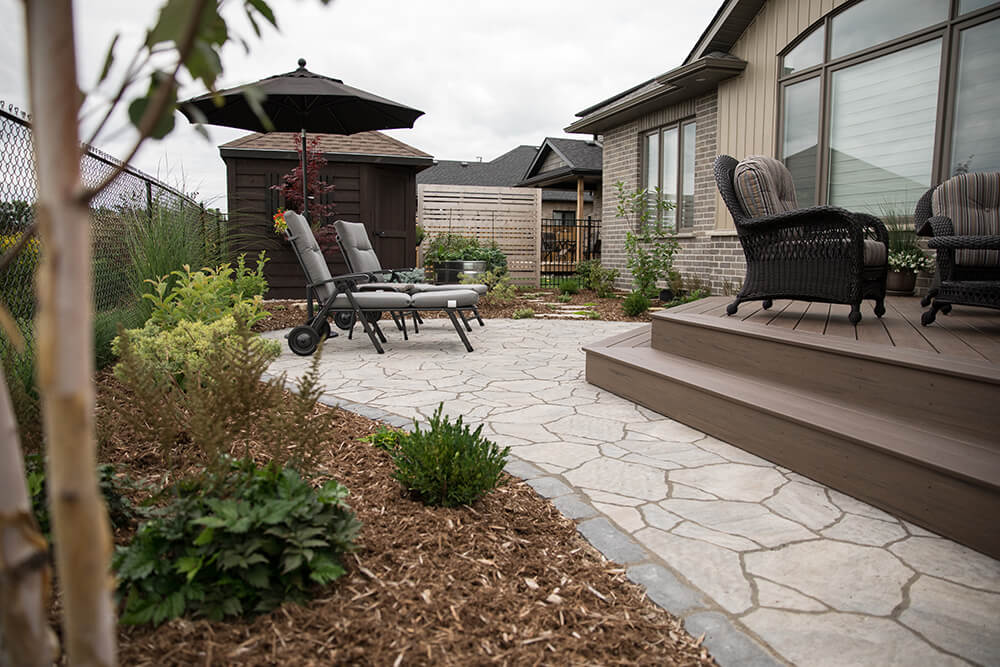 Walkways, patios, and retaining walls are gratifying additions to a home’s exterior. In keeping with the theme of minimal maintenance, though – a focus of almost every one of our customers – we recommend being mindful of the materials you use.
Walkways, patios, and retaining walls are gratifying additions to a home’s exterior. In keeping with the theme of minimal maintenance, though – a focus of almost every one of our customers – we recommend being mindful of the materials you use.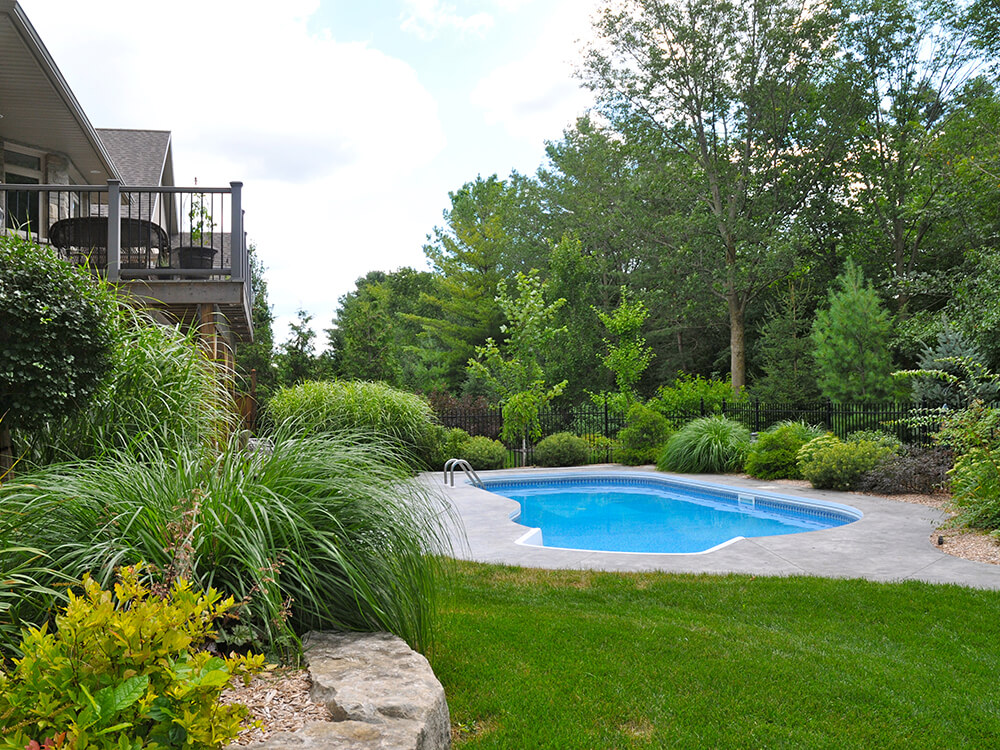 Plants, trees, and shrubs can be used to camouflage imperfections, add privacy, and enhance the existing beauty around your home’s exterior and yard. For example, an exposed foundation can make a home appear old and unkempt. But, planting a balanced selection of plants and shrubs appropriate for the location’s sun exposure can add depth and colour, providing a welcome distraction from your foundation’s drab, grey expanse.
Plants, trees, and shrubs can be used to camouflage imperfections, add privacy, and enhance the existing beauty around your home’s exterior and yard. For example, an exposed foundation can make a home appear old and unkempt. But, planting a balanced selection of plants and shrubs appropriate for the location’s sun exposure can add depth and colour, providing a welcome distraction from your foundation’s drab, grey expanse.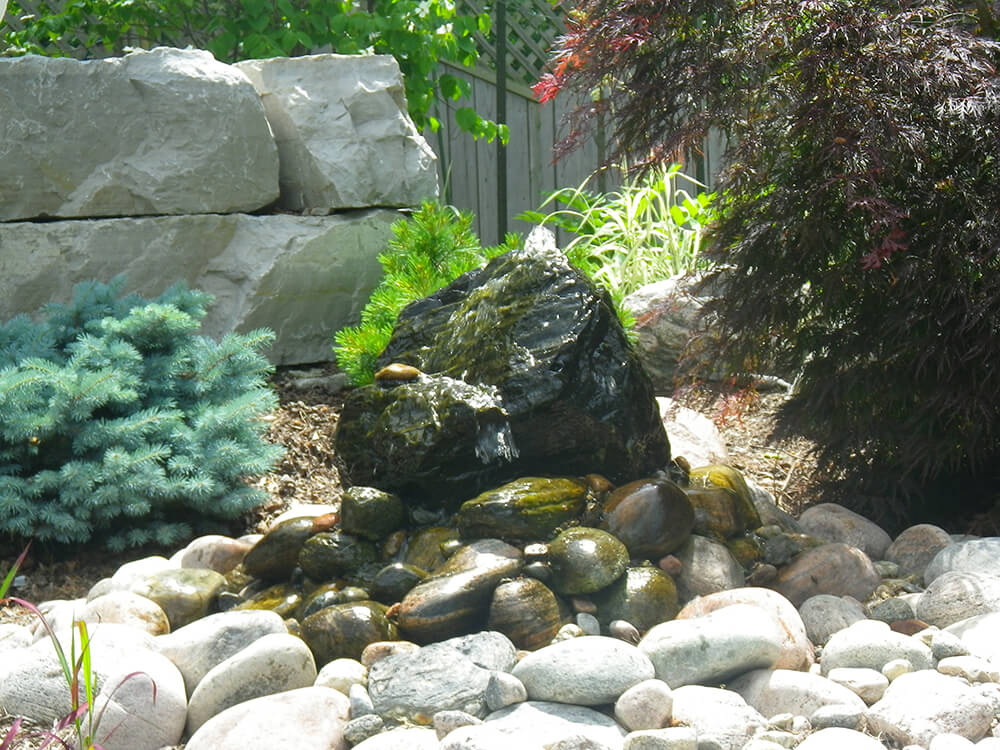 Add unique atmosphere to your outdoor living areas, walkways, and/or front entrance with lighting and water. Ponds, streams, waterfalls, fountains, and bubbling rocks add an audio-visual element that has a universally relaxing effect. And including lighting along walkways, trees, water features, pools, and patios enhances outdoor safety and enjoyment after the sun goes down.
Add unique atmosphere to your outdoor living areas, walkways, and/or front entrance with lighting and water. Ponds, streams, waterfalls, fountains, and bubbling rocks add an audio-visual element that has a universally relaxing effect. And including lighting along walkways, trees, water features, pools, and patios enhances outdoor safety and enjoyment after the sun goes down.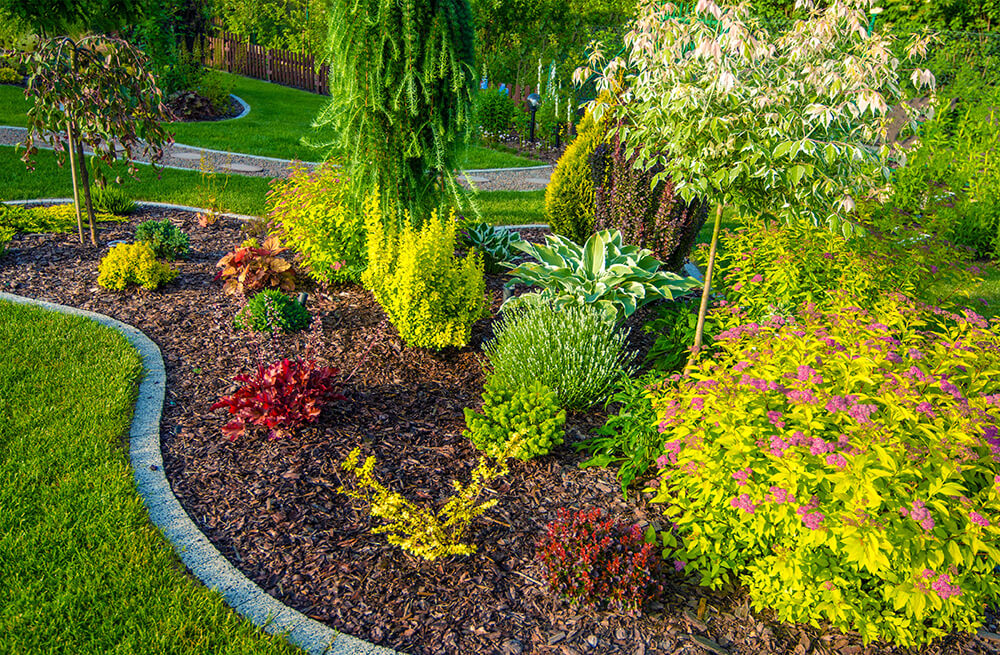
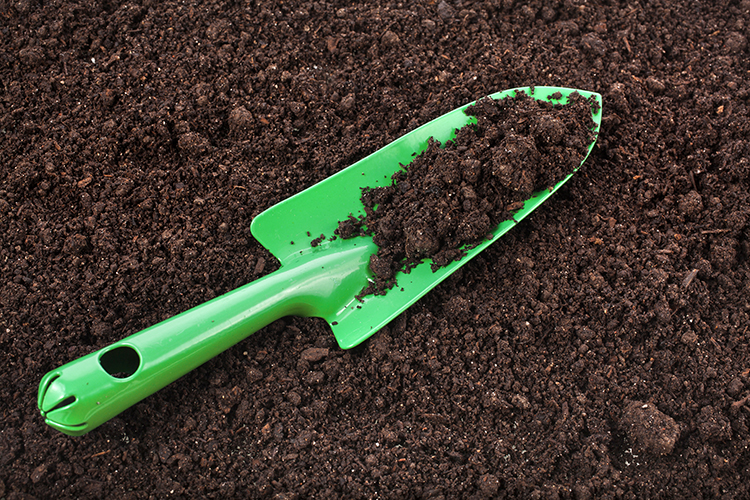 Soil is foundational to everything landscaping-related. The naturally occurring soil in your area may be clay-based. Clay holds onto water, which can promote poor drainage and lead to root rot in plants and trees.
Soil is foundational to everything landscaping-related. The naturally occurring soil in your area may be clay-based. Clay holds onto water, which can promote poor drainage and lead to root rot in plants and trees.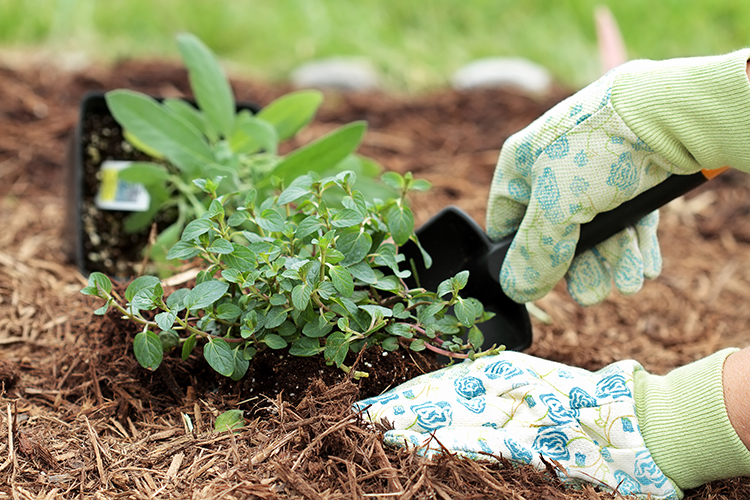 There are various types of mulch, including rustic options like straw, grass clippings, and shredded leaves. Some gardeners are even using newspaper as most of them are printed with neutrally-derived inks.
There are various types of mulch, including rustic options like straw, grass clippings, and shredded leaves. Some gardeners are even using newspaper as most of them are printed with neutrally-derived inks.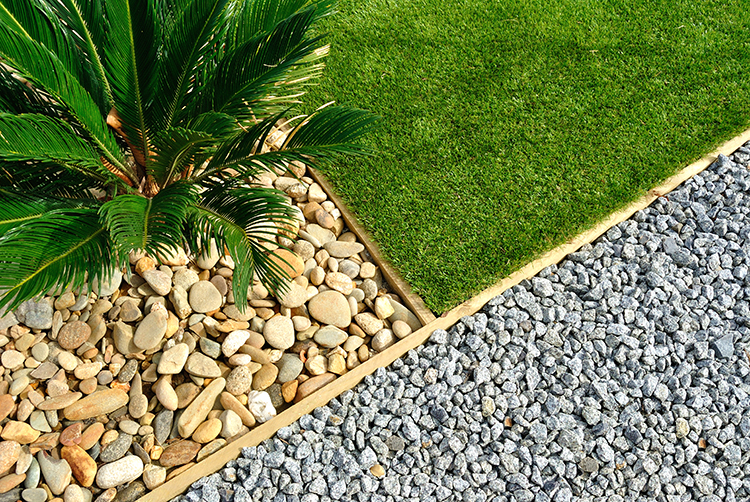 Stone has multiple applications in landscaping. Natural stone can be used with landscape fabric in place of mulch to suppress weeds and help retain moisture. Large natural rocks can be used as standalone sculptures and can even be made into water features. And of course, flat stone like flagstone is a great natural option for walkways, stairs, and patios.
Stone has multiple applications in landscaping. Natural stone can be used with landscape fabric in place of mulch to suppress weeds and help retain moisture. Large natural rocks can be used as standalone sculptures and can even be made into water features. And of course, flat stone like flagstone is a great natural option for walkways, stairs, and patios. Sand is an aggregate that’s most often used as a foundation for stone and pavers. It’s typically a combination of granular A gravel, sand or high-performance base stone.
Sand is an aggregate that’s most often used as a foundation for stone and pavers. It’s typically a combination of granular A gravel, sand or high-performance base stone.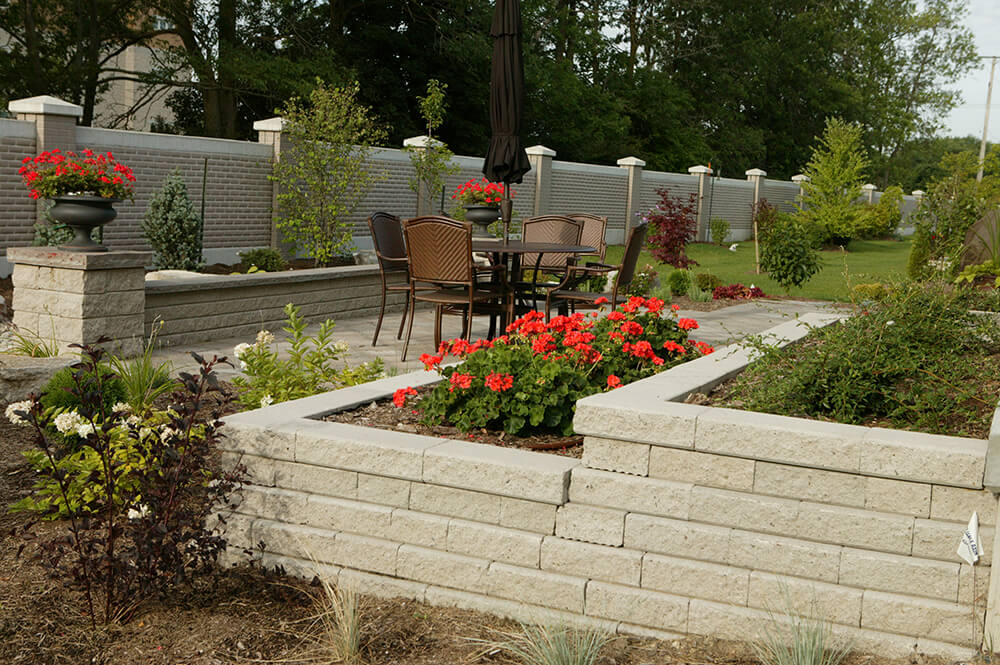
 Even though it may look nice at the beginning, a wood retaining wall will begin to weather after a season or two, detracting from its appearance and effectiveness. The structure will need to be treated regularly. And even with treatment, the material may need to be replaced in as little as five years. Plus, the chemicals from pressure-treated lumber leach into the soil, which is not good in general, but especially for vegetable and herb gardens.
Even though it may look nice at the beginning, a wood retaining wall will begin to weather after a season or two, detracting from its appearance and effectiveness. The structure will need to be treated regularly. And even with treatment, the material may need to be replaced in as little as five years. Plus, the chemicals from pressure-treated lumber leach into the soil, which is not good in general, but especially for vegetable and herb gardens.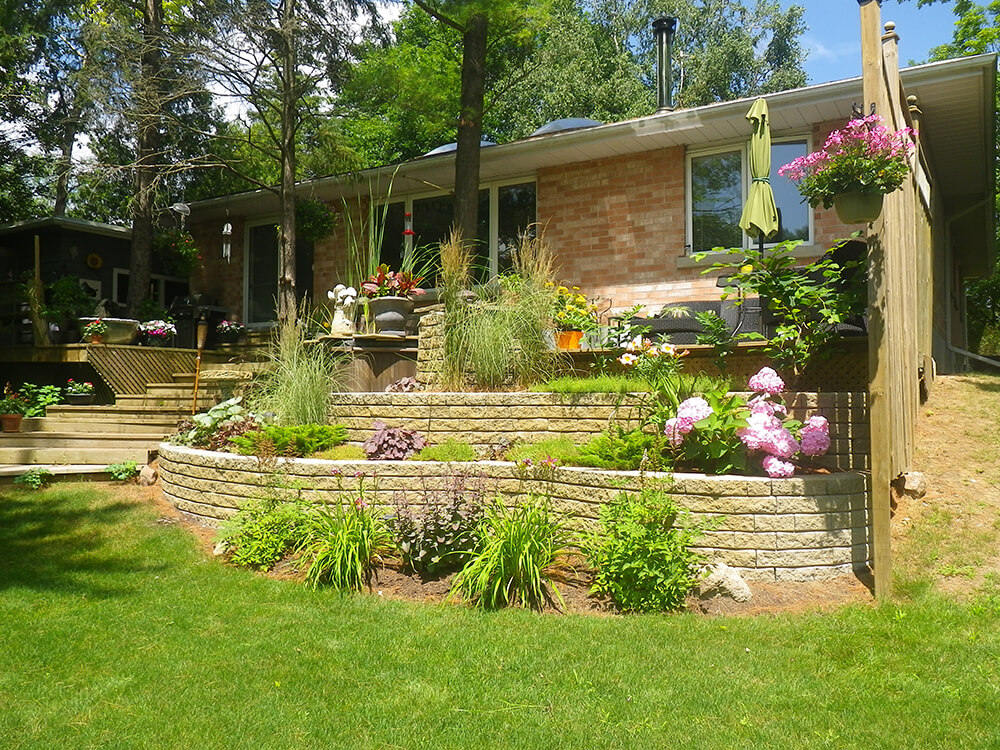 If the slope of the lot in question renders the yard otherwise tough to landscape, one or a tiered series of retaining wall(s) can help create stepped gardens that are much more amenable to hosting plants, shrubs, and trees. Or a retaining wall can convert a sloping lawn into one single level for enhanced enjoyment of your greenspace.
If the slope of the lot in question renders the yard otherwise tough to landscape, one or a tiered series of retaining wall(s) can help create stepped gardens that are much more amenable to hosting plants, shrubs, and trees. Or a retaining wall can convert a sloping lawn into one single level for enhanced enjoyment of your greenspace.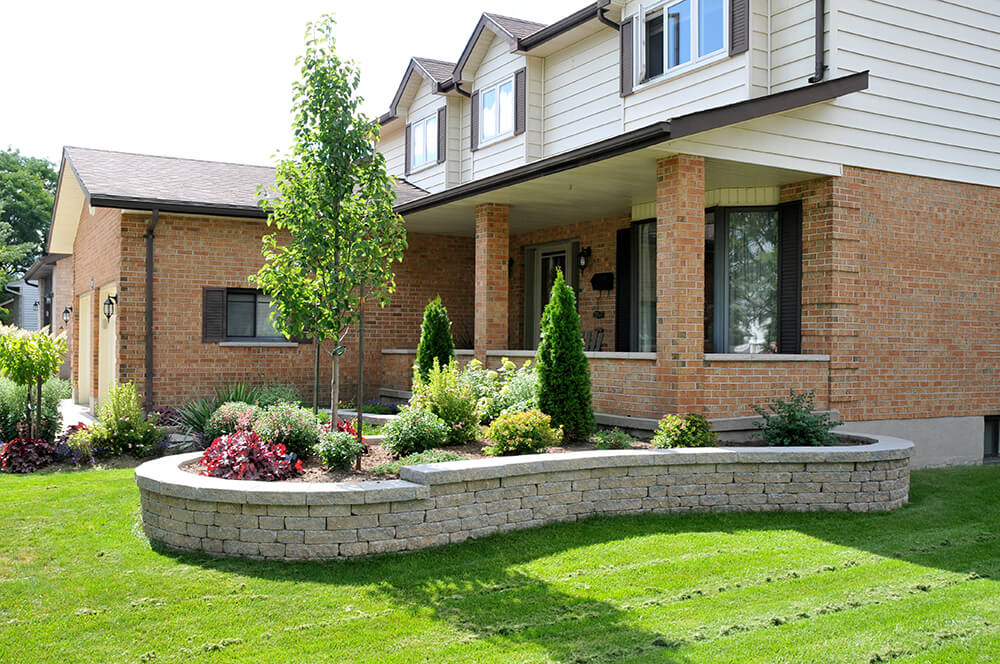 Foundation
Foundation